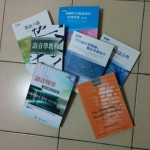Articles in the ‘Science and research’ category Page 4
-
How good is voice recognition for learning Chinese pronunciation?
Speech recognition technology has developed rapidly and can now be relied on to correctly identify standardised and clear pronunciation in Mandarin. But can it be used to check your Mandarin pronunciation? Not necessarily. This article looks at how well speech recognition software deals with non-native and low-quality audio, focusing on the question if speech recognition is too lenient for pronunciation practice.
Read → -
Using speech recognition to improve Chinese pronunciation, part 1
Speech recognition technology has developed rapidly and can now be relied on to correctly identify standardised and clear pronunciation in Mandarin. But can it be used to check your Mandarin pronunciation? Not necessarily. There are two problems that need to be investigated to answer that question. This article looks at the first: If speech recognition is unable to identify what you say, does that mean that your pronunciation is bad, or could it be the speech recognition that isn’t good enough?
Read → -
Reading is a lot like spaced repetition, only better
Learning vocabulary through reading and by using spaced repetition software are both common strategies employed by students learning Chinese, but which one is the most efficient? In this guest article, Kevin Bullaughey from WordSwing compares the two methods in terms of exposure and coverage.
Read → -
Cramming vs. spaced repetition: When to use which method to learn Chinese
Should you cram or use spaced repetition to learn Chinese? Discover when each method works best and why spaced repetition is key to long-term success.
Read → -
How and why to learn and teach Chinese through games
This article is a follow-up to a keynote presentation and a workshop held at the 15th Annual Chinese Teaching Conference at University College London. Even though the original target group is teachers of Chinese, the article is relevant for students as well.
Read → -
Whom should you trust for advice about learning Chinese?
There’s a lot of advice about how to learn Chinese floating around on forums, chat groups, social media, video services and blogs. Including Hacking Chinese. So how do you know whom you should trust? This article answers that question by discussing what my articles are based on.
Read → -
Obligatory and optional tone change rules in Mandarin
As if learning basic tones wasn’t enough, tones in Mandarin also influence each other and change depending on context. Some of these tone change rules you have to learn, but others are better left alone and will be absorbed automatically over time.
Read → -
The Hacking Chinese free tone training course
Learning to hear the difference between tones is difficult for many learners. Research shows that speaker variability and a systematic and predictable approach are key to overcoming the problem. With this article, I launch a tone training course, which is meant to provide you with just that. For free!
Read → -
Learning to pronounce Mandarin with Pinyin, Zhuyin and IPA: Part 3
As adults, understanding is important when learning pronunciation. One way to achieve this is through the International Phonetic Alphabet (IPA), which will allow you to see the sounds your ears might fail to hear. Learning IPA also means learning basic phonetics, and that will do you good in the long run!
Read → -
Review: The Geography of Thought: How East Asians and Westerners Think Differently… And Why
People often ask me about cultural differences between East Asia and West and if it’s true that people in different cultures really are all that different. I usually answer something along the lines of that the differences between individuals are bigger than those between cultures. After reading the book recommended in this article, though, I can say a lot more. Reading Richard Nisbett’s “The Geography of Thought” has helped me connect the dots and make sense of some of the differences between East Asia and the West. It’s an enjoyable as well as thought-provoking read.
Read →









